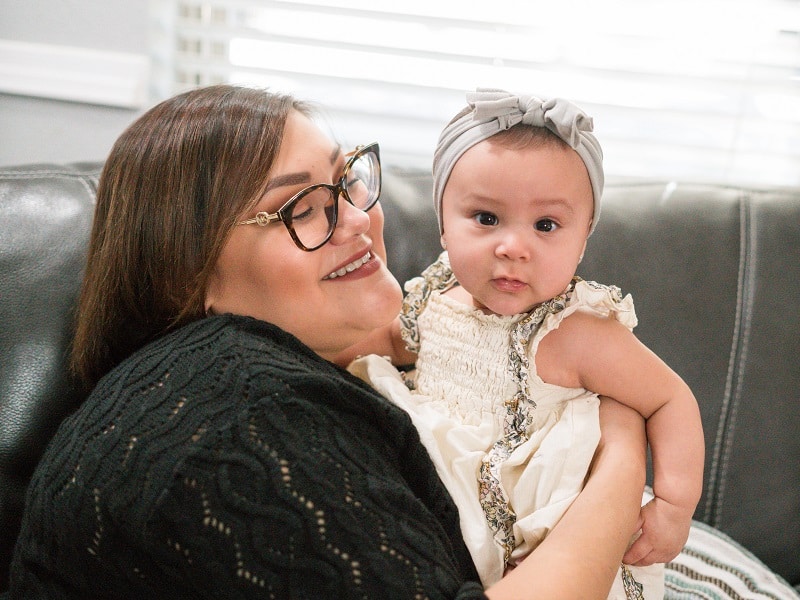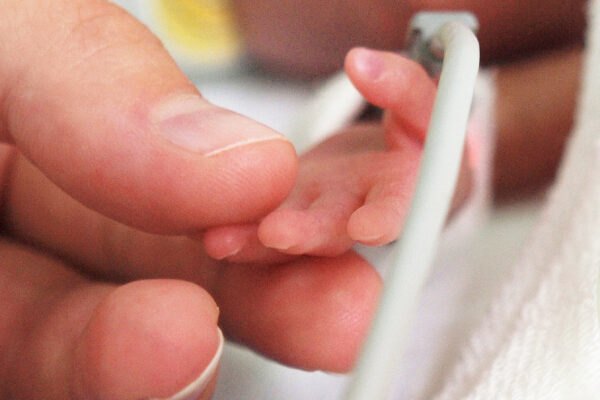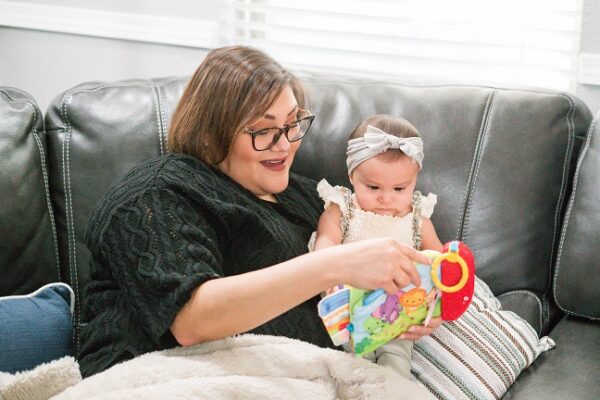Isabel Lopez credits her first baby with saving her from heart disease that had gone undetected before her birth.
“When Luna gets older, she’s going to know she saved her mommy’s life. I feel like there was a higher power looking out for both of us.”
The 35-year-old Dallas native was in her third trimester with baby Luna when high blood pressure and an excessive amount of fluid retention forced her to have an emergency cesarean delivery at Methodist Dallas Medical Center, seven weeks before her July 31 due date.
When Isabel didn’t bounce back after safely delivering her daughter, it led to the discovery of blockages in all of her major coronary arteries. Doctors had to perform open-heart surgery to save her.
EMERGENCY DELIVERY
Although Isabel had diabetes and high blood pressure, she had managed to control her symptoms for most of her pregnancy.
“Towards the end, that’s when I started to retain a lot of fluid,” Isabel says. “I gained over 100 pounds of water weight.”
Isabel’s OB-GYN, Theresa Patton, MD, referred her to cardiologist Manavjot Sidhu, MD, her colleague on the medical staff at Methodist Dallas. An echocardiogram didn’t reveal anything abnormal, but both physicians played it safe and began monitoring her condition more closely.
“She also had a cardiac screening earlier in her pregnancy and had no evidence of heart failure at that time,” Dr. Patton adds.
On June 13, Isabel arrived at Dr. Patton’s office for a regular checkup. Her fluid retention and hypertension were so severe that doctors had to deliver Luna that same day.
“I was nervous because I wasn’t expecting it,” she says. “Within 15 minutes of checking in at the hospital, I was in the room.”
Despite her premature birth and the fact that she weighed just 4 pounds, 15 ounces, Luna did not require intensive care. Both mother and daughter were able to go home after just three days at the hospital.
HEART FAILURE
The real trouble for Isabel began after she was discharged.
“The water weight wasn’t coming off. I was sluggish and didn’t want to eat,” she recalls. Doctors theorized about postpartum depression and worsening diabetes symptoms, but neither proved to be the culprit. “For about a week straight, I was vomiting acid. I couldn’t eat and was still feeling lethargic.”
Isabel decided to go to the emergency department for answers. Dr. Sidhu performed more evaluations and noticed a change in Isabel’s cardiac function. He decided to investigate further and gently inserted a catheter through Isabel’s blood vessels to take a closer look at her heart.
“The amount of disease that we found in the blood vessels of her heart was just unbelievable, given her age,” Dr. Sidhu says. “She had blockages in all the vessels of her heart.”
OPEN-HEART SURGERY
It’s likely that the stress of labor and delivery, coupled with Isabel’s diabetes and hypertension, accelerated previously undiagnosed coronary artery disease (CAD), causing it to reveal itself, Dr. Sidhu says.
“It was a perfect storm of factors,” he adds.
Isabel’s age made her case unique because CAD typically develops after decades of damage.
“Because she’s so young, this would not be a thing that somebody would think of, right off the bat,” Dr. Sidhu says.
Mini Sivadasan, MD, cardiothoracic surgeon on the medical staff at Methodist Dallas, performed a quadruple coronary artery bypass surgery to restore Isabel’s heart function. The nine-hour procedure required Dr. Sivadasan to take blood vessels from Isabel’s arm and leg and graft them into her heart. The goal is to redirect blood flow around the blockages.
Isabel remained under observation at Methodist Dallas for a month before she was well enough to go home.
“My stay at the hospital was amazing. The nurses and physical therapists were awesome. I had people check on me around the clock,” Isabel says. “My husband stayed with me every night. My family came and visited me all of the time, and they would bring my little one. It was uplifting. They were a great support system.”
DIFFERENT SYMPTOMS
Now back home with Luna, Isabel is determined to continue her physical rehabilitation and improve her health, so she can have more quality time with her family. She says her story is a lesson for other women who may suffer from heart disease to advocate for themselves. It’s a lesson echoed by Dr. Sidhu.
“In cardiology textbooks, we are usually taught a classic picture of how coronary artery disease presents, but that picture doesn’t really fit women,” Dr. Sidhu says.
While women may experience the telltale sign of chest pain, they may also experience no symptoms at all or less obvious ones such as nausea, vomiting, fatigue, or back pain, according to the Centers for Disease Control and Prevention.
Instead of ignoring these symptoms, Dr. Sidhu encourages women to consult their physicians about individual risks.
“Prevention is always better than treatment,” he advises.









